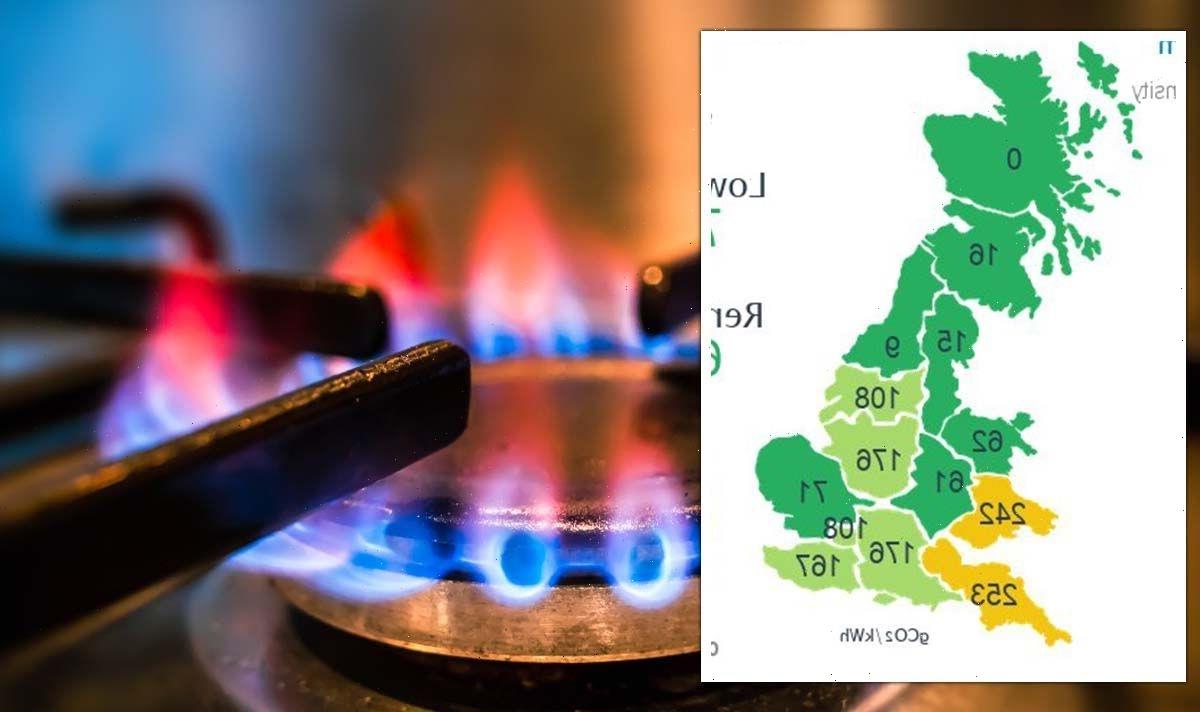PMQs: Sunak hits back at Blackford's energy plan criticism
We use your sign-up to provide content in ways you’ve consented to and to improve our understanding of you. This may include adverts from us and 3rd parties based on our understanding. You can unsubscribe at any time. More info
Yesterday, the UK crossed a major energy milestone, as the National Grid announced that wind produced over half of the country’s electricity it needed. Increased use of renewable energy means that Britain would rely less on generating electricity from natural gas, which has soared to dizzying wholesale costs over the past year. This is a major step for ensuring the UK’s energy security, which has been thrown into chaos since Russia’s invasion of Ukraine. Overall, natural gas only accounted for just under 21 percent of the country’s electricity needs, with the rest of the energy mix coming from a number of renewable or low carbon energy sources.
The National Grid ESO, which runs the UK’s electricity systems, tweeted yesterday: “The wind record continues to tumble. For the first time in UK history we can confirm that wind has produced over 20GW of electricity!!!”
They later confirmed the figures by saying: “Yesterday, wind generated 20896MW in the 12:30 settlement period. That’s OVER HALF (53 percent) of all of GB’s electricity. Overall, it was a VERY green day – 70 percent of energy was zero carbon (Nuclear, Wind, Hydro, Solar & Storage)”.
They estimated that yesterday, wind energy produced 54.9 percent of the UK’s electricity, followed by natural gas at 20.6 percent, at nuclear at 14.1 percent.
Meanwhile, electricity imports through interconnections with Europe were responsible 5.3 percent of the country’s mix, followed by biomass at 2.0 percent, hydro at 1.7 percent, solar 1.3 at percent, and coal at just 0.1 percent.


On their app, the National Grid ESO estimated that the amount of wind-generated electricity would be the “approximate equivalent to 4,179,200 kettles on the boil.”
Speaking to Express.co.uk, Andy Willis, the CEO of Kona Energy explained the significance of the milestone, saying: “Yesterday, the National grid hit a record. They had over 20GW of wind blowing at one time, which is more than its ever been as it’s been a particularly windy day yesterday.
“In that circumstance, what the National Grid will do is use as much wind as they possibly can. The idea behind that is theoretically it is the cheapest resource because obviously for a turbine to blow you don’t have any fuel costs or anything like that.
“If they still need additional energy from somewhere else, that’s when they use electricity from gas-fired power stations or coal-fired power stations.

“But the National Grid does a great job at utilising the cheapest energy resource first, which is always going to be solar or wind, and our logic is that you should use batteries to meet that shortfall. But until we have more online, we have to use more gas-fired power stations to meet the shortfall.”
Experts have increasingly called on the Government to build more renewable energy, particularly as green electricity is about nine times cheaper than current gas prices.
Analysis by the Carbon Brief found that the Government had granted a number of contracts to offshore wind farm producers to generate electricity at an average price of £48 per megawatt-hour (MWh) This is nine times cheaper than the £446/MWh current cost of running gas-fired power stations.
While wind energy has incredible potential in the UK, experts have warned that the UK needs to build more battery storage in order to ensure that the electricity generated from wind is not wasted.
DON’T MISS:
EDF unveils blackout lifeline with energy ‘Superhub’ to power 100,000 [REVEAL]
Nuclear armageddon warning: BILLIONS to be wiped off Earth [REPORT]
One thing Bulb customers should do before energy company is taken over [INSIGHT]

As part of the efforts to tackle this issue, Kona Energy, a UK-based firm, has struck a deal with Gore Street Energy Storage Fund (GSF) for a 200MW project in North West England.
Once constructed, this site will be one of the biggest battery storage facilities in Europe, storing electricity generated by a variety of sources, including renewable power.
This could be a valuable lifeline to hundreds of thousands of households, particularly as the National Grid is planning to impose three-hour power cuts this winter should it fail to acquire enough energy supplies.
Source: Read Full Article
